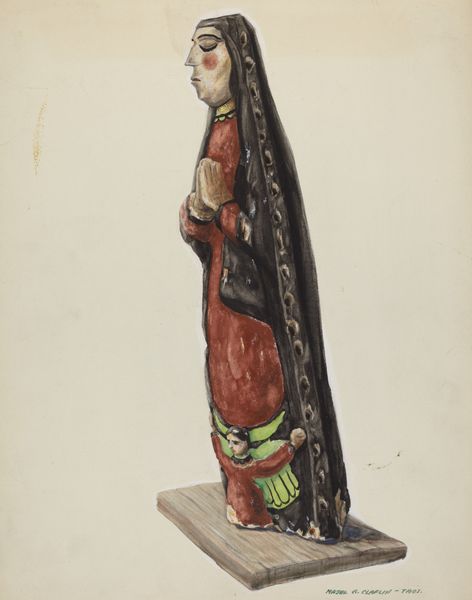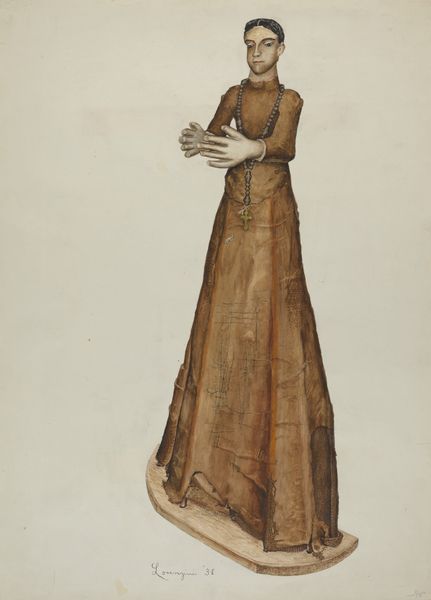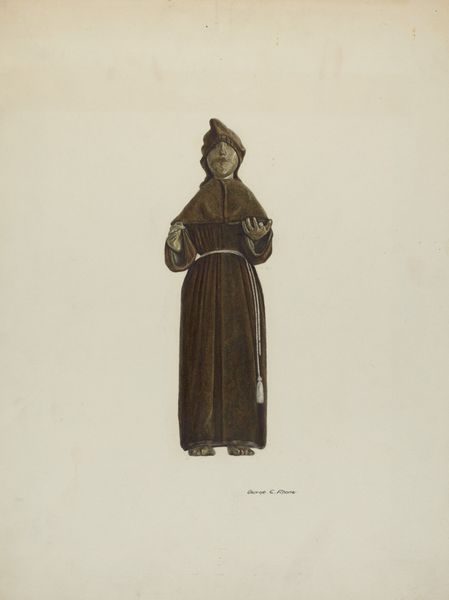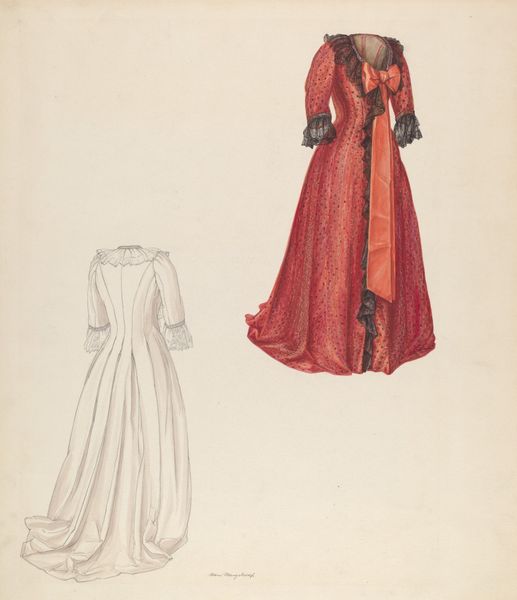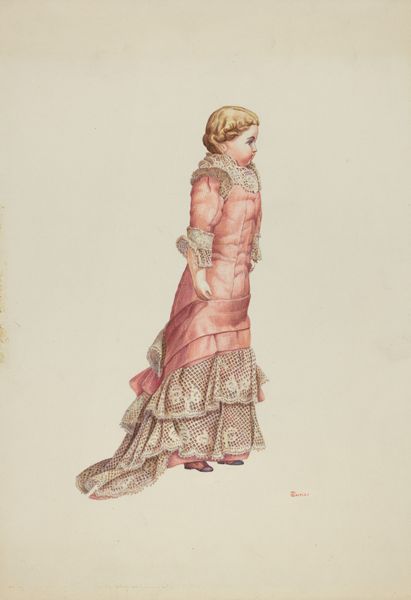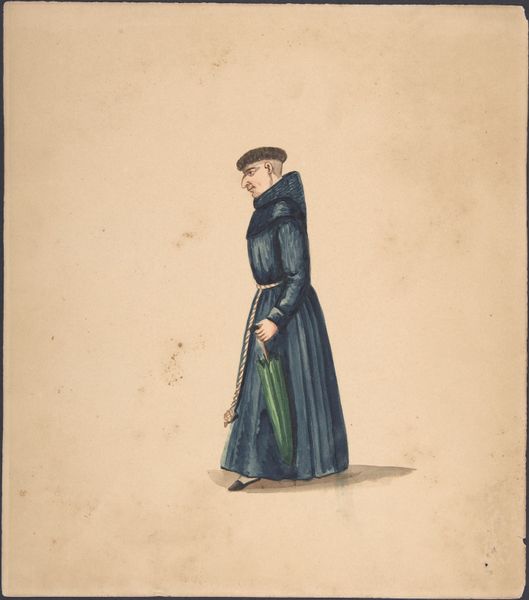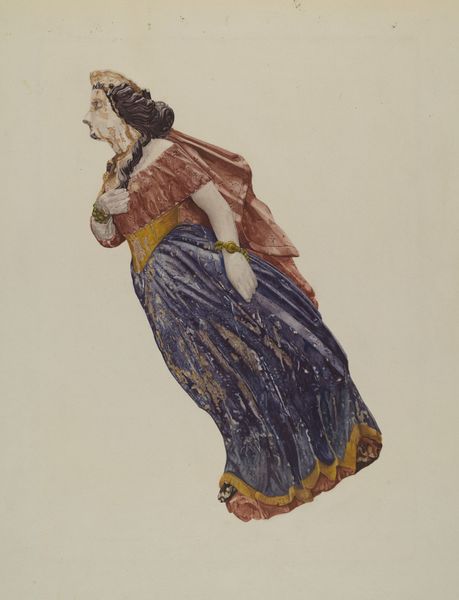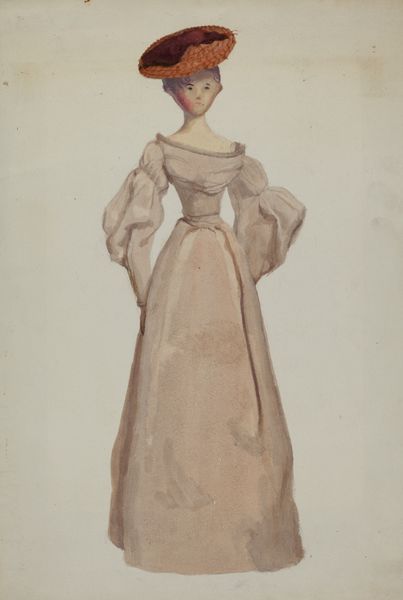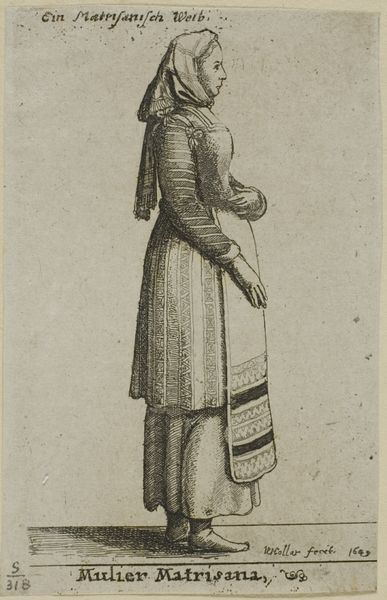
drawing, watercolor, sculpture
#
portrait
#
drawing
#
figuration
#
watercolor
#
folk-art
#
sculpture
Dimensions: overall: 35.7 x 27.9 cm (14 1/16 x 11 in.)
Copyright: National Gallery of Art: CC0 1.0
Curator: What strikes you first about this watercolor drawing, titled “Unnamed Bulto” created by Majel G. Claflin between 1935 and 1942? Editor: I’m drawn to the stark simplicity and, frankly, the solemnity. It’s as if the sculpture is observing a moment of quiet reflection, maybe a touch of weariness in the eyes? Curator: It captures a form of folk art called "bulto," referring to a carved wooden sculpture of a saint, very typical in Northern New Mexico. This was during a period when the Federal Art Project, as part of the WPA, commissioned artists to document and preserve regional art forms, including these bultos. It was both an employment opportunity and a cultural mission. Editor: Interesting, because my sense of it as a drawing is that it feels, for all its stillness, so full of potential movement, of some future… action. A history about to unfold, perhaps. What's intriguing to me is that the original wooden figure might be, itself, a vehicle for religious practice or… almost ritual! Is this a portrait of devotion or a snapshot of cultural preservation? Curator: Good question, and the answer may well be both! The drawing documents the bulto, placing it within the context of the period when many New Deal programs sought to document regional artistic practices. It also reflects the religious significance that bultos had within local communities. It served, potentially, to share the spiritual weight of a handmade item with a wider public unfamiliar with this particular tradition of religious representation. Editor: Exactly. The drawing makes me consider my own preconceptions. The muted tones enhance the somber mood, making you wonder about its history. Curator: And to consider that an act of art preservation isn’t just an objective process, but is loaded with politics and its own agendas and beliefs, especially when the source artwork carries the cultural and religious weight that bultos carry. Editor: So the next time you see a historical art piece, it's a dialogue across time about preservation, religious feeling and, well, how much changes and yet stays profoundly the same. Curator: Indeed, this work bridges art, history, and devotion, reflecting how cultural preservation projects operate within complex historical moments.
Comments
No comments
Be the first to comment and join the conversation on the ultimate creative platform.
